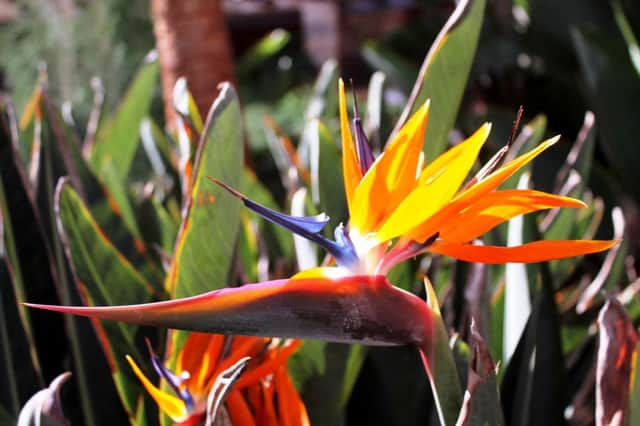Bird on the wing


For so many of them arrive back in the UK with living reminders of what sunshine and warmth can bring – flowers. And one flower in particular.
Many years ago, I met a Yorkshireman who had grown a bird of paradise flower – and managed to make it bloom (admittedly, in a heated greenhouse).
Advertisement
Hide AdAdvertisement
Hide AdHe had persevered for a decade or more to make the plant produce just one small orange flower, but he was delighted because he lived on the flanks of the Pennines.
Back in those days, it really was a great achievement; even today, there aren’t that many bird of paradise flowers growing in this country.
But fly a few hours south and you’ll realise that on their home territory they flourish – a bit like a very colourful, strikingly architectural weed. Because Strelitzia reginae isn’t that difficult to cultivate if it gets the right conditions.
It’s a low-maintenance evergreen perennial which is fairly tolerant of most soil conditions, and, once it has established itself, doesn’t even need much water. Given a decent soil and plenty of sun and warmth, it will flower several times a year.
Advertisement
Hide AdAdvertisement
Hide AdNote the word ‘warmth’ – the bird of paradise flower isn’t a lover of cold weather, so before you buy a plant, make sure your garden can house it safely. The word ‘conservatory’ springs to mind.
S reginae is slow-growing and won’t flower for several years until it is well established, so apart from that conservatory, you’ll need plenty of patience.
If you possess both, then you may like to consider your very own bird of paradise plant to show off to friends and neighbours. Pot it up in a large container and water and feed it occasionally with a high-potash fertiliser.
In the wild, the tender leaves drop off as they age, leaving the base of the plant’s stem bare; in a big pot, the plant won’t grow tall and its stem should remain decently clothed in foliage. Top-dress annually and re-pot every year.
Advertisement
Hide AdAdvertisement
Hide AdIf all that sounds like too much trouble, buy a few of those wonderful flowers; many florists now offer them for sale. Even better, take a winter holiday in the Canaries and come home with a living reminder of what life is like on a semi-tropical island.